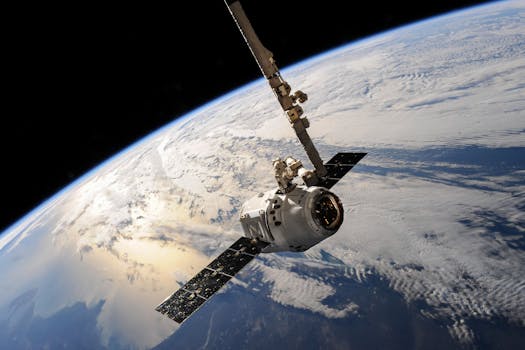The Future of Satellite Technology: Trends and Innovations

The future of satellite technology is rapidly evolving with new trends and innovations emerging every day. From improved communication systems to enhanced navigation and Earth observation, satellite technology is transforming the way we live and work. In this article, we will explore the latest trends and innovations in satellite technology and their potential impact on various industries.
One of the most significant trends in satellite technology is the development of small satellites, also known as CubeSats. These tiny satellites are approximately the size of a shoebox and weigh less than 3 pounds, making them much cheaper to launch and operate than traditional satellites. Small satellites are being used for a variety of applications, including Earth observation, communication, and navigation. They are also being used to test new technologies and conduct scientific research.
Another trend in satellite technology is the use of advanced materials and manufacturing techniques. New materials such as carbon fiber and advanced composites are being used to build stronger and lighter satellites. Additionally, 3D printing is being used to create complex satellite components, such as antennas and propulsion systems. These advancements are enabling the development of more efficient and cost-effective satellites.
The use of artificial intelligence (AI) and machine learning (ML) is also becoming increasingly popular in satellite technology. AI and ML algorithms are being used to analyze data from satellites, detect patterns, and make predictions. For example, AI-powered systems are being used to detect natural disasters such as hurricanes and wildfires, and to predict weather patterns. Additionally, ML algorithms are being used to optimize satellite communication systems and improve navigation.
In terms of innovations, one of the most exciting developments in satellite technology is the emergence of satellite constellations. A satellite constellation is a group of satellites that work together to provide global coverage and connectivity. These constellations are being used to provide high-speed internet access to remote and underserved communities, and to enable the Internet of Things (IoT). Companies such as SpaceX and OneWeb are launching thousands of satellites into orbit to create these constellations.
Another innovation in satellite technology is the development of reusable launch vehicles. Reusable launch vehicles are capable of launching satellites into orbit and then returning to Earth, reducing the cost of access to space. Companies such as SpaceX and Blue Origin are developing reusable launch vehicles, which are expected to significantly reduce the cost of launching satellites and other spacecraft.
In conclusion, the future of satellite technology is rapidly evolving with new trends and innovations emerging every day. From small satellites and advanced materials to AI and ML, and satellite constellations and reusable launch vehicles, the possibilities are endless. As satellite technology continues to advance, we can expect to see significant improvements in communication, navigation, and Earth observation, and new applications and industries emerging.

